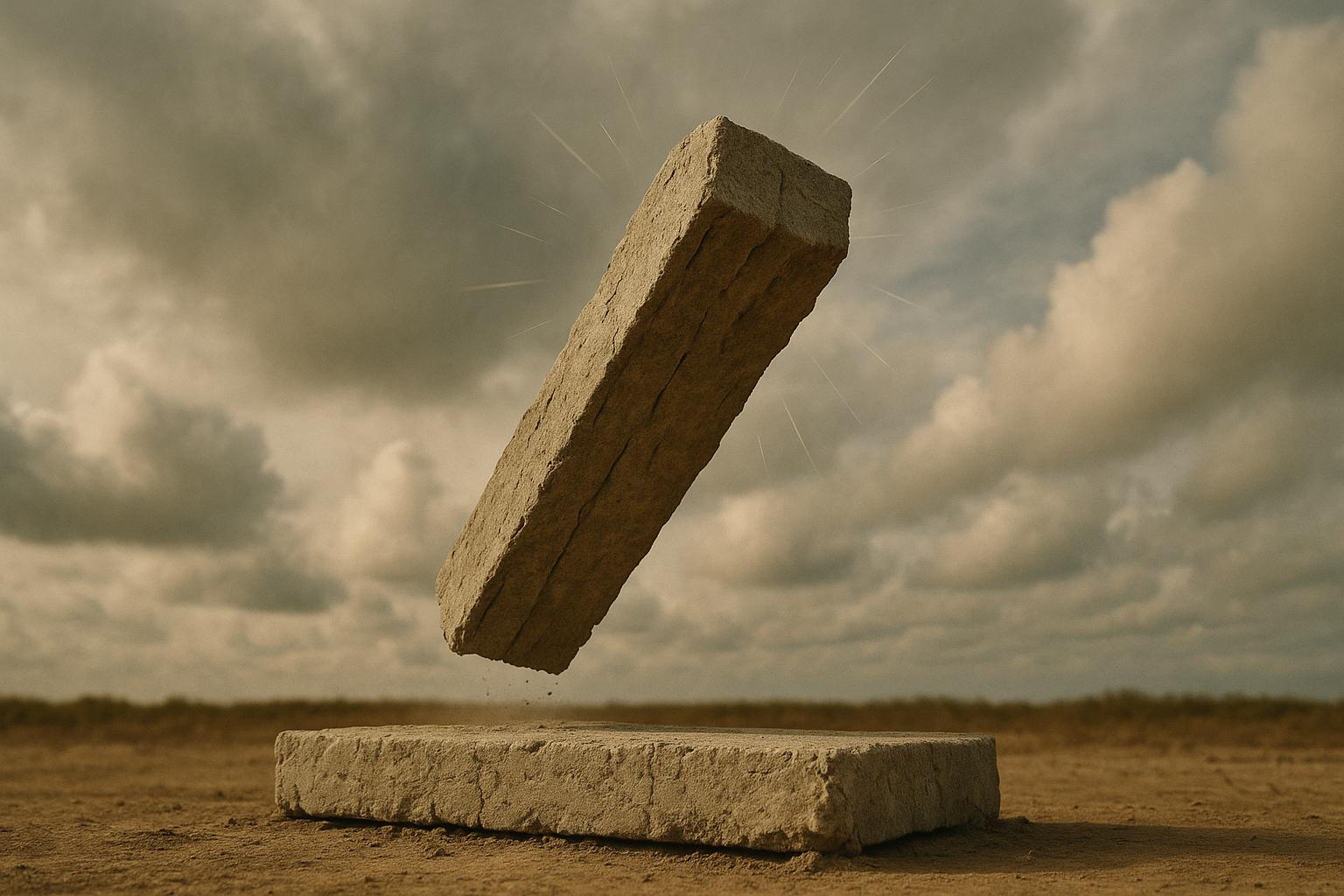Future Observatory, the Design Museum’s research programme dedicated to advancing the green transition, has introduced an innovative Stone Demonstrator to highlight the potential of pre-tensioned stone as a sustainable, low-carbon construction material. Designed collaboratively by GROUPWORK architects with engineering experts Webb Yates and Arup, this project serves both as a full-scale research prototype and a persuasive call for the construction industry to accelerate its shift towards low-carbon materials.
The demonstrator features stone blocks connected via steel tendons that are tensioned to induce compression in the stone—capitalising on the ancient principle that stone excels under compression but fails under tension. The result is a robust pre-tensioned frame comprising beams and columns that support a self-sufficient facade constructed from stone bricks. These bricks produce at least 90% fewer carbon emissions than London’s traditional fired clay bricks. Floorplates blend pre-tensioned stone slabs with timber joists, complemented by a roof made from dowel-laminated timber, creating a holistic low-carbon structure.
The project’s environmental credentials are striking. The Stone Demonstrator’s entire embodied carbon amounts to just 3,000kg of CO₂—representing around a 92% reduction compared to traditional steel or concrete frames with clay brick facades, which would typically generate 32,000 to 40,000kg of embodied carbon. The modular design also allows for prefabrication, which reduces on-site construction time and enables dismantling and reuse of components, further contributing to sustainability.
In addition to constructing the demonstrator, Future Observatory funded a team of engineers at University College London, led by Professor Wendel Sebastian, to develop practical design guidance for stone structures. This guide aims to simplify adoption by the construction industry and is seen as a crucial step toward formalising stone’s role through building codes.
The Stone Demonstrator, situated in Empress Place on the Earls Court redevelopment site in London, is open to the public and stands three storeys high. It is the latest in a series of stone prototypes by GROUPWORK and Webb Yates, who have previously collaborated on notable projects like the Stone Theatre and the New Stone Age exhibition.
Amin Taha, founder and chairman of GROUPWORK, emphasised to Building Design Online that the structure embodies nearly two decades of research and testing and is promoted not for nostalgic reasons but as an ultra-low-carbon alternative to conventional steel and concrete construction. He described pre-tensioned stone as the ethical choice due to its dramatic reduction in embodied carbon. Steve Webb from Webb Yates further highlighted that stone production consumes only a fraction of the energy required for steel or concrete and suggested that broader adoption could even contribute to closing coal mines rather than replacing them with green alternatives.
The structural concept builds on recent engineering research into pre-tensioned natural stone, such as a comprehensive report supervised by Professor Sebastian at UCL, which demonstrated the feasibility and benefits of stone beams with variable prestressing moments. These studies showcase stone’s potential not only for environmental benefits but also for structural performance.
This innovation stands as part of the broader architectural and engineering movement seeking to reinvent traditional materials with contemporary low-carbon technologies. Comparable developments like Holcim’s carbon prestressed concrete have also received industry recognition for cutting CO₂ emissions drastically, underscoring a growing trend toward minimising construction’s environmental footprint.
However, the use of stone in construction does come with challenges. Stone’s natural variability requires rigorous inspection and quality control to ensure structural integrity, as noted in environmental evaluations of stone structures. Despite this, the durability and minimal maintenance requirements of stone further enhance its environmental advantages, especially when factoring in lifecycle reuse potential.
As the construction sector faces mounting pressures to reduce carbon emissions, this Stone Demonstrator exemplifies how combining age-old materials with modern engineering can create pioneering low-carbon building solutions. With further development and adoption, pre-tensioned stone could play a significant role in reducing construction's carbon footprint, presenting a sustainable alternative that may redefine industry standards.
📌 Reference Map:
- Paragraph 1 – [1] (Building Design Online), [2] (Future Observatory)
- Paragraph 2 – [1] (Building Design Online), [2] (Future Observatory)
- Paragraph 3 – [1] (Building Design Online), [2] (Future Observatory)
- Paragraph 4 – [1] (Building Design Online)
- Paragraph 5 – [1] (Building Design Online), [2] (Future Observatory)
- Paragraph 6 – [1] (Building Design Online)
- Paragraph 7 – [3] (Institution of Structural Engineers)
- Paragraph 8 – [4] (Holcim), [1] (Building Design Online)
- Paragraph 9 – [5] (Galway Report)
- Paragraph 10 – [1] (Building Design Online), [2] (Future Observatory)
Source: Noah Wire Services
